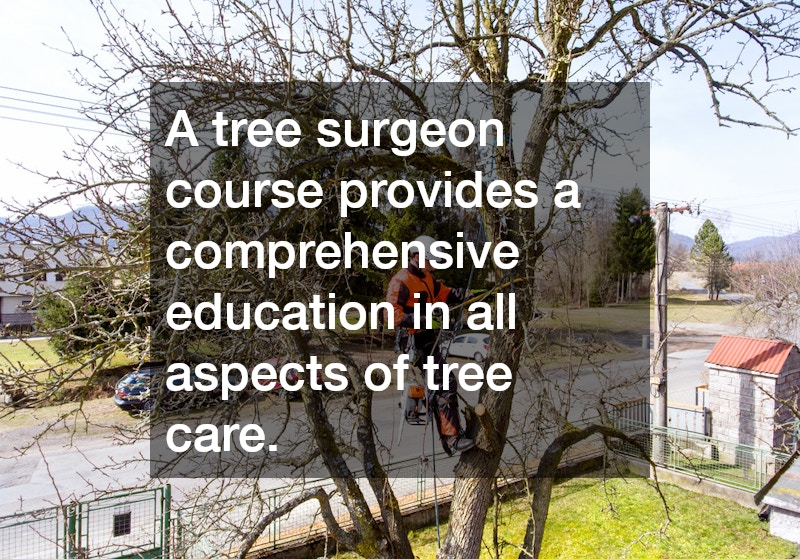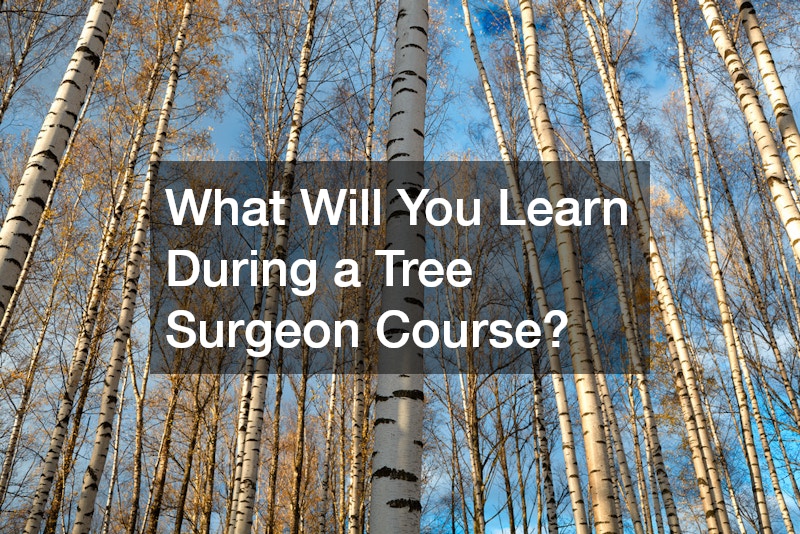What Will You Learn During a Tree Surgeon Course?
Tree surgery is a specialized profession that requires extensive knowledge, training, and skills to care for trees safely and effectively. If you’re interested in pursuing a career in this field, enrolling in a tree surgeon course is the first step toward gaining the expertise needed to thrive in this industry. A tree surgeon, also known as an arborist, plays a vital role in maintaining the health and safety of trees, whether by pruning, felling, or treating them for disease.
A tree surgeon course covers a range of essential topics and practical skills that prepare you for various tasks in tree care. This article will guide you through the key components you can expect to learn during the course.
1. Understanding Tree Biology and Physiology
Before performing any type of tree surgery, it’s important to understand how trees function. A tree surgeon coursetypically begins with lessons in tree biology and physiology. You’ll learn about the structure of trees, including their roots, trunk, branches, and leaves. Additionally, you’ll explore how trees grow, how they absorb nutrients, and how they respond to various environmental factors.
This knowledge is crucial for diagnosing problems, such as diseases or pests, and determining the best treatment or care plan. You’ll also learn how different species of trees have unique characteristics that affect how they should be pruned or maintained.
2. Tree Identification
During a tree surgeon course, you’ll also focus on tree identification. Understanding different species of trees is key to providing proper care, as each species requires different approaches to pruning, disease management, and felling.
You’ll learn how to identify various types of trees by observing their leaves, bark, flowers, and overall shape. Knowing the species will help you make informed decisions about how to care for them and what techniques to apply during tree surgery tasks. Tree identification also plays a significant role in conservation efforts and ensuring the longevity of trees in urban and rural environments.
3. Safe Use of Equipment and Tools
A critical part of any tree surgeon course is learning how to safely use the equipment and tools needed for the job. As a tree surgeon, you’ll work with various machinery and hand tools, such as chainsaws, pruning shears, ropes, harnesses, and climbing gear. Since working at height is a frequent requirement, mastering the proper use of climbing equipment is essential.
In the course, you’ll receive training in:
-
Chainsaw Operation: Chainsaws are a primary tool in tree surgery, used for tasks like pruning large branches or cutting down trees. You’ll learn how to operate a chainsaw safely and efficiently, as well as how to maintain it to prevent accidents.
-
Rope and Harness Techniques: Tree surgery often involves climbing trees to reach high branches. You’ll be trained in how to use ropes and harnesses to ascend and descend safely, as well as how to secure yourself in the tree while working.
-
Safety Gear: You’ll be taught the importance of wearing personal protective equipment (PPE), such as helmets, gloves, and eye protection. Proper use of safety gear reduces the risk of injury during tree surgery tasks.
4. Pruning Techniques
One of the core responsibilities of a tree surgeon is pruning trees to promote healthy growth and improve their structure. A tree surgeon course will cover the principles of pruning and teach you various techniques for removing dead or damaged branches, thinning tree crowns, and encouraging new growth.
You’ll learn about different types of pruning, such as:
-
Crown Lifting: Removing the lower branches of a tree to increase the distance between the base of the tree and its lowest branches. This is often done for aesthetic reasons or to provide clearance for pedestrians or vehicles.
-
Crown Thinning: Selectively removing branches from within the tree’s crown to reduce its density. This technique allows more light to penetrate the tree, which can benefit the health of both the tree and the surrounding landscape.
-
Pollarding: A method of pruning where the upper branches of a tree are removed to promote dense, new growth. Pollarding is typically performed to control the size of a tree and maintain its shape.
5. Tree Felling and Removal
In some cases, trees need to be removed due to disease, safety hazards, or urban development. During a tree surgeon course, you’ll learn the techniques required for tree felling and removal. This process involves cutting down trees in a controlled manner to prevent damage to surrounding property or injury to people.
You’ll be taught how to assess the tree and its surroundings to determine the best method for felling it, whether it’s by sectioning (removing the tree in stages) or felling it in one go. You’ll also learn how to handle situations where space is limited, such as in urban areas, and how to safely guide the tree’s fall.
A tree surgeon course provides a comprehensive education in all aspects of tree care, from biology and pruning techniques to the safe use of equipment and tree removal. By completing this course, you’ll be equipped with the knowledge and skills necessary to pursue a rewarding career in tree surgery. Whether you’re interested in maintaining the health of trees, managing urban landscapes, or responding to emergencies, a tree surgeon course can open the door to a variety of career opportunities in this vital field.
.

